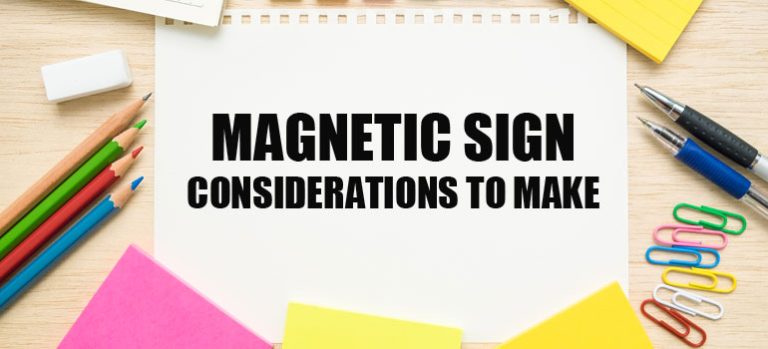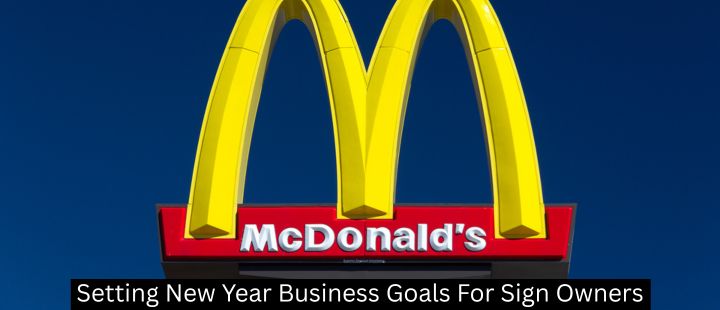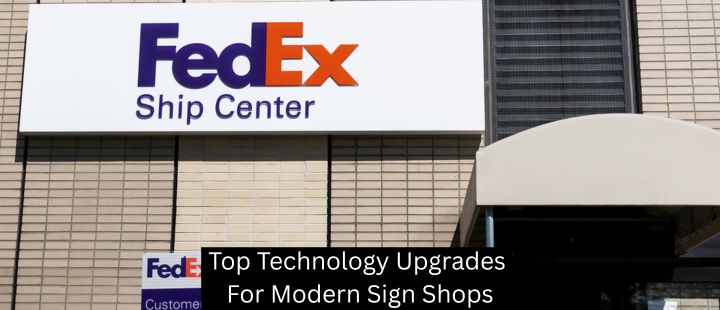As a novel way to make a statement in a sea of ads, vehicle signage is a very popular marketing asset in the modern world. And while lettering directly onto the vehicle is an effective option, the affordability and user-friendliness of magnetic signage has made magnetic signs huge among small business owners.
With this in mind, it makes sense for sign business owners to take their magnetic signage seriously. After all, providing signage options in all price ranges opens your business up to the maximal number of prospects.
Today’s post has been assembled by the Signworld team as an introduction to magnetic signage for sign business owners. Read on to learn about the tools and target market for your new service addition!
Understanding Your Substrate
Most magnetic signs are just vinyl graphics that have been combined with a flexible magnetic substrate. These magnetized substrates can be either vinyl or paper. Magnetized vinyl will be cut from 12 to 30 millimeters thick. It is primarily used with self-adhesive vinyl and large-format digital printing. Magnetized vinyl is available in a wide range of colors and can be tailored to suit the client’s specific brand palette or preference. Gloss or matte options are available, with the latter being a safer option to avoid hot-spots in areas with excessive or unpredictable lighting.
Get the Most Out Of Your Magnets
Before you offer magnetic signs, it’s important to understand a few of the principles in play so that you make the right choices for each client.
As a general rule, a magnet’s thickness is positive correlated to its strength. The strength of a magnet is measured with a calculation of “pull strength,” which represents its resistance to external lifting force.
It’s crucial that you match the pull strength of your magnetic sign to the task at hand. If you’re selling a sign to a client intending to mount it on his car, you’ll need to ensure there’s enough pull force to resist peeling off of a vehicle that’s zooming down the road at highway speeds. While 12 and 20 millimeter magnets will do as temporary signage on buildings, filing cabinets, or industrial refrigerators, Signworld experts recommend a minimum of 30 millimeter thickness for car-mounted magnetic signs.
Choose Smart Installation Surfaces
Producing a great magnetic sign is one thing, but you’ll attract more clients if you also know how to advise them on optimal installation. While installing a magnet sign is usually as easy as you’d think, success depends on choosing the right surfaces. Magnets won’t stick to non-ferrous metals or alloys – that means no aluminum or stainless steel. If your client is driving a Corvette with a fiberglass body, don’t sell them a magnetic sign that won’t stick!
Get The Right Tools For The Job
Producing magnetic signs with the recommended 30 millimeter sheeting requires certain tools. Fortunately, they’re not particularly expensive or hard to come by. Aside from the magnetic signage itself, you’ll only need a heavy duty utility knife, ruler, and corner rounder.
Know Your Audience
Magnetic signage is most popular among business owners looking for maximum impact on a budget. This usually means entrepreneurs and small business owners who lack commercial vehicles. Realty advisors, start-up maid services, and knowledge workers are excellent examples.
Find More Magnetic Sign Resources
If you want to learn more about how to incorporate magnetic signage into your business model, visit http://www.signworld.org.




